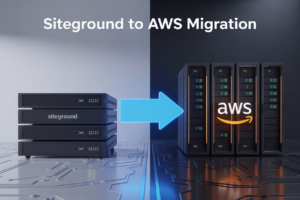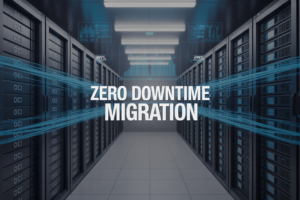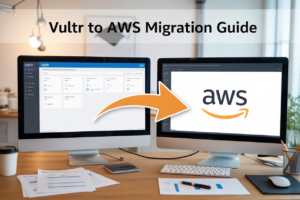Enterprise developers and AI engineers face real challenges when building production-ready generative AI applications that meet corporate security standards and scale requirements. AWS Bedrock offers a managed service that simplifies enterprise AI development while maintaining the control and governance businesses need.
This guide is designed for:
- Enterprise software architects planning AI integration strategies
- DevOps teams responsible for deploying scalable AI solutions
- Engineering managers evaluating AWS AI services for production workloads
We’ll walk through AWS Bedrock’s enterprise-focused capabilities and show you how to set up a secure AI development environment from scratch. You’ll also learn proven strategies for designing AI application architecture that scales with your business needs while keeping costs under control through smart performance optimization techniques.
Understanding AWS Bedrock’s Core Capabilities for Enterprise AI
Multi-model foundation model access and selection
AWS Bedrock provides access to multiple foundation models from leading AI companies including Anthropic’s Claude, Amazon’s Titan, and Meta’s Llama through a single unified API. This multi-model approach allows enterprise developers to compare and select the most suitable generative AI model for specific use cases without vendor lock-in. Teams can easily switch between models or run A/B tests to optimize performance across different tasks like text generation, code completion, or document analysis. The platform eliminates the complexity of managing separate integrations, making it simple to experiment with different AI capabilities and find the perfect match for your enterprise requirements.
Serverless architecture benefits for scalability
The serverless foundation of AWS Bedrock automatically handles infrastructure provisioning, scaling, and maintenance, allowing enterprise teams to focus entirely on application development rather than operational overhead. This architecture dynamically scales compute resources based on demand, ensuring consistent performance during traffic spikes while reducing costs during low-usage periods. Enterprise AI applications built on Bedrock can handle millions of requests without manual intervention, making it perfect for customer-facing chatbots, content generation tools, or internal productivity applications. The pay-per-use model means you only consume resources when actively processing requests, making it highly cost-effective for variable workloads.
Built-in security and compliance features
Security remains paramount for enterprise AI deployments, and AWS Bedrock delivers comprehensive protection through encryption at rest and in transit, VPC integration, and fine-grained access controls via IAM policies. The platform provides audit logging for all AI interactions, enabling compliance teams to track usage patterns and maintain regulatory oversight. Data processing stays within your AWS account boundary, ensuring sensitive information never leaves your controlled environment. Built-in content filtering and safety guardrails help prevent harmful outputs, while compliance certifications including SOC 2, GDPR, and HIPAA make Bedrock suitable for highly regulated industries like healthcare and financial services.
Cost-effective pricing models for enterprise budgets
AWS Bedrock offers transparent, usage-based pricing that aligns with enterprise budget planning and cost optimization goals. Organizations pay only for the tokens processed, with no upfront commitments or minimum fees, making it easy to predict and control AI-related expenses. The pricing model supports both on-demand usage for variable workloads and provisioned throughput for predictable, high-volume applications requiring guaranteed performance. Enterprise customers can leverage AWS cost management tools to set spending alerts, track usage by department or project, and optimize costs through right-sizing recommendations, making generative AI accessible even for cost-conscious organizations.
Setting Up Your Enterprise AI Development Environment
AWS account configuration and IAM permissions
Start by creating dedicated IAM roles with precise permissions for your AWS Bedrock development environment. Configure service-linked roles that enable Bedrock access while maintaining security boundaries through least-privilege principles. Set up cross-account access patterns for development, staging, and production environments to ensure proper isolation.
Bedrock service activation and model access requests
Navigate to the AWS Bedrock console and activate the service in your preferred region. Submit model access requests for foundation models like Claude, Titan, or Jurassic-2 through the model access page. Processing typically takes 24-48 hours, so plan accordingly. Different models require separate approval workflows, and some enterprise models need additional compliance documentation.
Development toolkit installation and setup
Install the AWS CLI v2 and configure your credentials using aws configure or IAM roles. Set up the Boto3 SDK with the latest version supporting Bedrock APIs. Install language-specific SDKs like the AWS SDK for Python, Java, or JavaScript depending on your development stack. Configure your IDE with AWS toolkit extensions for streamlined development workflows and real-time error detection.
Designing Scalable AI Application Architecture
Microservices integration patterns with Bedrock
Breaking down your AI application into microservices creates a flexible foundation for AWS Bedrock integration. Each service should handle specific tasks like text generation, embeddings, or content moderation through dedicated API endpoints. Container orchestration with Amazon ECS or EKS allows independent scaling of services based on workload demands. Use event-driven patterns with Amazon EventBridge to connect services and handle asynchronous processing. Service mesh architecture enables secure communication between components while maintaining observability across your entire AI workflow.
API gateway configuration for secure access
Amazon API Gateway acts as your front door for managing access to Bedrock-powered services. Configure throttling limits to prevent abuse and implement API keys for client identification. JWT tokens provide stateless authentication while AWS WAF filters malicious requests before they reach your AI endpoints. Rate limiting prevents resource exhaustion during high-traffic periods. Custom authorizers validate permissions against your identity provider, ensuring only authorized users access expensive generative AI operations. CloudWatch metrics track usage patterns and performance bottlenecks across all API endpoints.
Data pipeline design for model training and inference
Robust data pipelines feed your AI applications with clean, relevant information for both training custom models and real-time inference. Amazon S3 serves as your data lake, storing raw documents, images, and structured datasets. AWS Glue transforms and cleanses data before feeding it to Bedrock models. Step Functions orchestrate complex workflows that combine data preprocessing, model inference, and post-processing steps. Lambda functions handle lightweight transformations while EMR clusters process large-scale batch operations. Data versioning ensures reproducible results across different model iterations.
Multi-region deployment strategies
Geographic distribution of your AI applications improves user experience and provides disaster recovery capabilities. Deploy Bedrock models across multiple AWS regions to reduce latency for global users. Cross-region replication keeps your data synchronized while maintaining compliance with local regulations. Route 53 health checks automatically redirect traffic away from unhealthy regions. Consider data residency requirements when choosing deployment regions, especially for sensitive enterprise content. Blue-green deployments minimize downtime during updates across distributed infrastructure.
Load balancing and auto-scaling considerations
Application Load Balancer distributes incoming requests across multiple instances running your AI services. Target groups health checks ensure traffic only routes to healthy containers. Auto Scaling Groups monitor CloudWatch metrics like CPU usage and request queue depth to dynamically adjust capacity. Predictive scaling anticipates demand spikes based on historical patterns. Consider cold start times for Lambda functions handling AI workloads and implement connection pooling for consistent performance. Custom metrics based on Bedrock API response times help scale services before users experience delays.
Implementing Security and Governance Best Practices
Data encryption in transit and at rest
AWS Bedrock automatically encrypts all data using AES-256 encryption both in transit and at rest. You can configure customer-managed KMS keys for additional control over your encryption keys. This ensures your sensitive training data and model outputs remain protected throughout the entire AI pipeline, meeting enterprise security requirements and compliance standards.
Role-based access control implementation
Implement fine-grained IAM policies to control who can access specific Bedrock models and features. Create custom roles for different team members – data scientists, developers, and administrators – each with appropriate permissions. Use resource-based policies to restrict access to specific foundation models and configure cross-account access when working with multiple AWS accounts in your organization.
Audit logging and compliance monitoring
Enable CloudTrail logging to capture all API calls made to AWS Bedrock services, creating a complete audit trail for compliance reporting. Set up CloudWatch monitoring to track model usage, performance metrics, and potential security incidents. Configure automated alerts for unusual access patterns or unauthorized model invocations to maintain visibility into your AI application’s security posture.
Model output filtering and content moderation
Deploy content filters and guardrails to automatically detect and block inappropriate or harmful content generated by your AI models. Configure custom moderation rules based on your industry requirements and use cases. Implement real-time output scanning to prevent sensitive information leakage and ensure generated content aligns with your organization’s ethical AI guidelines and regulatory compliance needs.
Optimizing Performance and Managing Costs
Model selection strategies for specific use cases
Choosing the right model for your AWS Bedrock application directly impacts both performance and costs. Claude models excel at reasoning tasks and code generation, while Titan models offer cost-effective solutions for simpler text processing. For chatbots handling customer support, Claude Instant provides excellent quality at lower latency. Amazon’s Titan Text works well for content summarization and basic question-answering scenarios. Anthropic’s Claude v2 shines in complex analysis and document processing tasks. Consider your specific requirements: Claude models handle multi-turn conversations better, while Jurassic-2 models perform well for creative writing tasks. Always test multiple models with your actual data before making production decisions.
Response caching and performance tuning
Smart caching strategies can reduce AWS Bedrock costs by up to 80% while improving response times significantly. Implement Redis or ElastiCache to store frequently requested responses, especially for common queries or standardized outputs. Set cache expiration policies based on content freshness requirements – product descriptions might cache for hours, while real-time data needs shorter windows. Use response streaming for longer outputs to improve perceived performance. Configure your applications to batch similar requests when possible. Monitor token usage patterns to identify optimization opportunities. Pre-generate common responses during off-peak hours to reduce real-time processing costs.
Usage monitoring and cost optimization techniques
Effective monitoring prevents AWS Bedrock costs from spiraling out of control while maintaining optimal AI performance optimization. CloudWatch metrics track token consumption, request patterns, and error rates across different models. Set up billing alerts when usage exceeds predetermined thresholds. Analyze peak usage times to implement auto-scaling policies that match demand patterns. Use AWS Cost Explorer to identify expensive queries and optimize them. Implement request throttling for non-critical applications during high-traffic periods. Consider using provisioned throughput for predictable workloads to achieve better pricing. Regular audits of usage patterns help identify unused resources and rightsizing opportunities for your enterprise AI applications.
AWS Bedrock gives enterprise developers the tools they need to build production-ready generative AI applications without getting bogged down in infrastructure complexities. From setting up secure development environments to implementing robust governance frameworks, the platform handles the heavy lifting so teams can focus on creating value for their organizations. The combination of multiple foundation models, enterprise-grade security controls, and cost optimization features makes it easier than ever to move AI projects from proof-of-concept to full-scale deployment.
The real power of AWS Bedrock lies in its ability to scale with your business needs while maintaining the security and compliance standards that enterprises demand. Start with a pilot project to familiarize your team with the platform’s capabilities, then gradually expand your AI initiatives as you build confidence and expertise. Your next breakthrough application could be just a few API calls away.




















